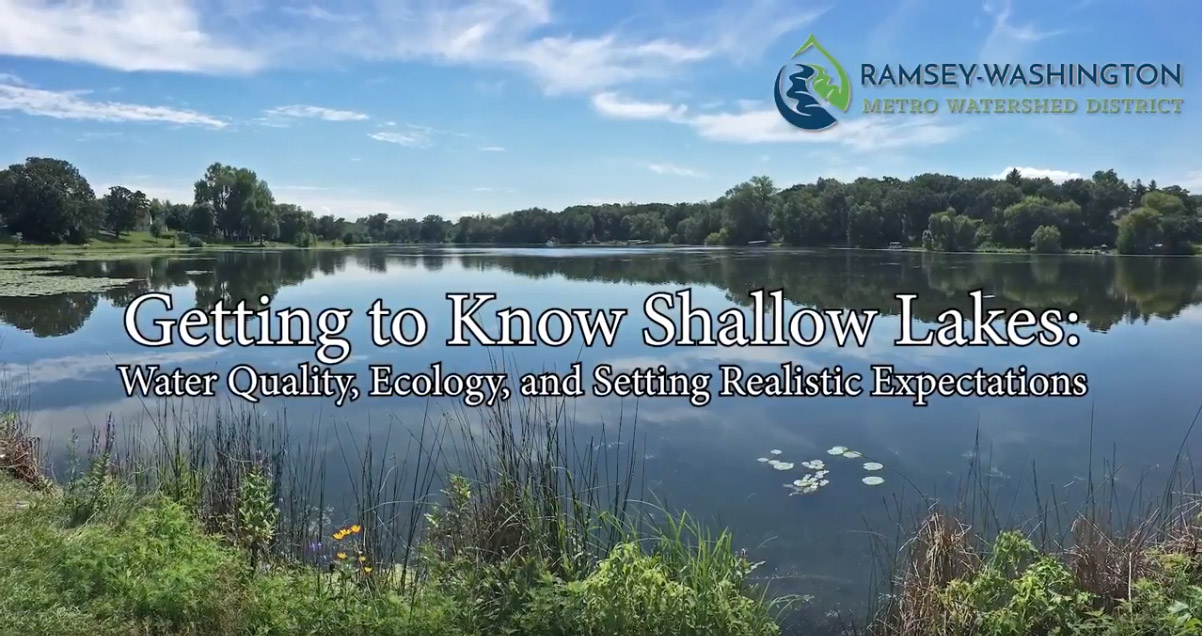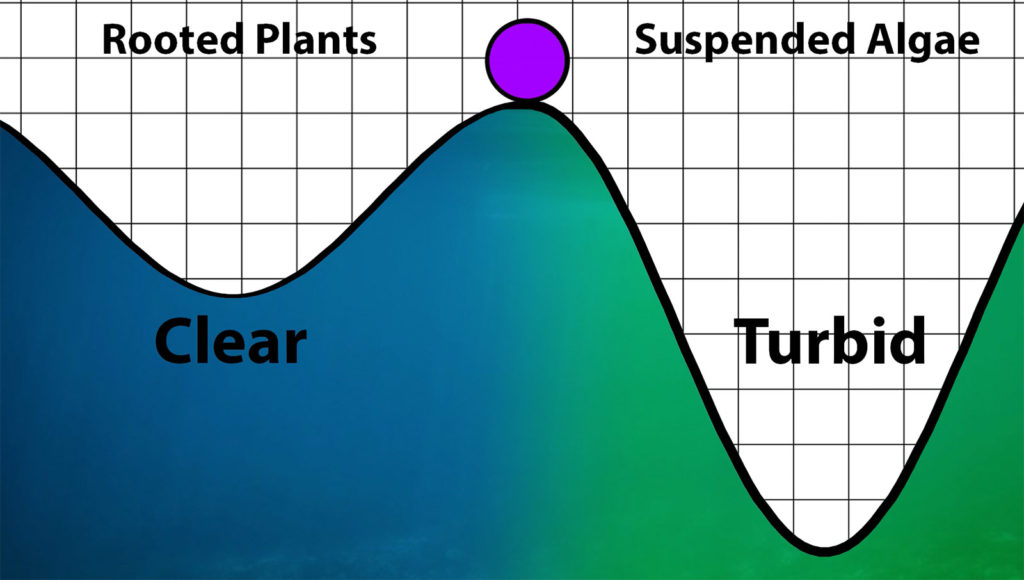
Shallow Lakes video addresses water quality, ecology and recreation
Watch the video: Getting to Know Shallow Lakes

Urban shallow lakes are an important resource in our watershed district, supporting a variety of wildlife and enjoyed by many local residents. The educational video, Getting to Know Shallow Lakes, includes background on shallow lakes ecology, along with perspectives on the value of clean water and healthy habitat.
Defined as being less than 15 feet deep, shallow lakes function much differently than deep lakes. “When shallow lakes have good water quality, they also tend to have abundant aquatic plant cover,” explained Natural Resource Specialist Bill Bartodziej. “And while this vegetation provides excellent habitat for migratory birds, fish and other aquatic life in the lake, it can limit certain recreational uses like swimming and waterskiing.”
Clear vs. turbid state

Shallow lakes exist in either a clear state dominated by rooted aquatic plants, or in a turbid state dominated by algae. Turbid lakes are marked by poor water quality and are often home to large numbers of carp, which stir up nutrient-rich sediment from the lake bottom.
When carp are removed from a shallow lake, people are often surprised at the amount vegetation that can flourish under clear water conditions. In some cases, this perception of “too much vegetation” leads residents to seek aquatic plant management options like herbicide treatment or mechanical harvesting. Since Minnesota does not have an agency tasked with managing aquatic plants (the DNR only provides permits for aquatic plant control and some cost-share funding), these efforts are usually directed by local lake associations, cities or counties.
As we work to improve the water quality of shallow lakes, it is important to set realistic expectations for recreational use – and to find value in these important ecosystems.
Questions or comments? Join the conversation on our Facebook page, or drop us an email.